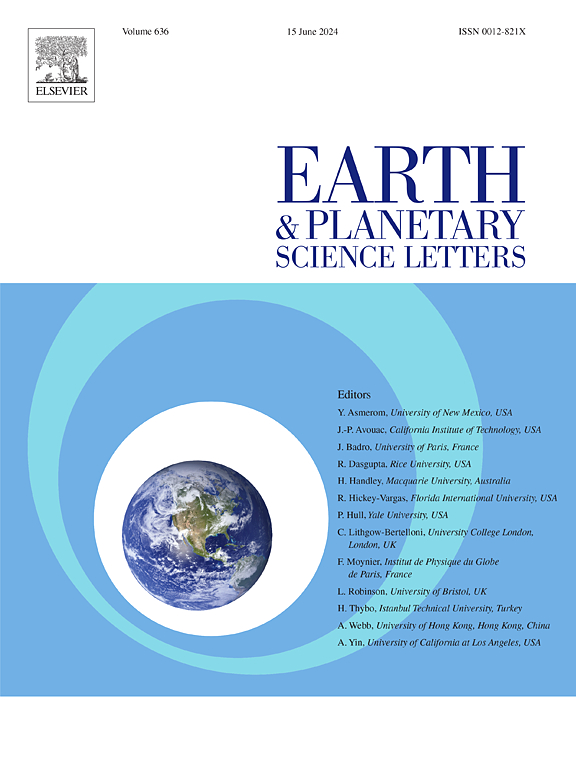Serpentinite dehydration-driven redox heterogeneity in cold subduction zone magmas
IF 4.8
1区 地球科学
Q1 GEOCHEMISTRY & GEOPHYSICS
引用次数: 0
Abstract
Serpentinite-derived slab fluids likely control the oxidation state of the sub-arc mantle, yet their oxidation state remains controversial. To address this issue, we report the first set of redox-sensitive chromium isotopic data for arc and back-arc basin lavas. Samples from the Mariana Arc and eastern Manus Basin have heavier Cr isotopic compositions (δ53Cr = −0.13 to −0.18 ‰) than the MORB-like δ53Cr values in the Mariana back-arc basin (−0.21 to −0.31 ‰). The δ53Cr values correlate with Ba/La and V/Yb ratios, suggesting the control of slab-derived fluids on across-arc Cr isotope and oxygen fugacity variations. The Cr6+-bearing oxidized alkaline fluids released by serpentinite dehydration at sub-arc depths are enriched in heavy Cr isotopes. Their infiltration and reactions with the overlying mantle wedge facilitate the sub-arc oxidation of Fe2+ to Fe3+ and Cr2+ to Cr3+, resulting in heavy Cr isotopes and high oxygen fugacity in arc magmas. Oxidized fluids diminish beyond sub-arc depths due to the complete breakdown of antigorite, thus back-arc basin basalts have MORB-like δ53Cr values and low oxygen fugacity. Our study suggests that Cr isotopes can provide critical insights into the role of serpentinite-derived fluids in redox heterogeneity in subduction-related magmas.
冷俯冲带岩浆蛇纹岩脱水驱动的氧化还原非均质性
蛇纹岩衍生的板状流体可能控制着弧下地幔的氧化状态,但它们的氧化状态仍然存在争议。为了解决这一问题,我们报告了第一组弧后盆地熔岩的氧化还原敏感铬同位素数据。马里亚纳弧和马努斯盆地东部样品的Cr同位素组成(δ53Cr = - 0.13 ~ - 0.18‰)比马里亚纳弧后盆地的δ53Cr值(- 0.21 ~ - 0.31‰)更重。δ53Cr值与Ba/La和V/Yb比值相关,表明板源流体对跨弧Cr同位素和氧逸度变化的控制作用。弧下深度蛇纹岩脱水释放的含Cr6+氧化碱性流体富集重Cr同位素。它们的渗透和与上覆地幔楔体的反应促进了Fe2+和Cr2+在弧下氧化为Fe3+和Cr3+,导致弧岩浆中Cr同位素重,氧逸度高。弧后盆地玄武岩的δ53Cr值与morb相似,氧逸度较低。我们的研究表明,Cr同位素可以对蛇纹岩衍生流体在俯冲相关岩浆氧化还原非均质性中的作用提供重要的见解。
本文章由计算机程序翻译,如有差异,请以英文原文为准。
求助全文
约1分钟内获得全文
求助全文
来源期刊

Earth and Planetary Science Letters
地学-地球化学与地球物理
CiteScore
10.30
自引率
5.70%
发文量
475
审稿时长
2.8 months
期刊介绍:
Earth and Planetary Science Letters (EPSL) is a leading journal for researchers across the entire Earth and planetary sciences community. It publishes concise, exciting, high-impact articles ("Letters") of broad interest. Its focus is on physical and chemical processes, the evolution and general properties of the Earth and planets - from their deep interiors to their atmospheres. EPSL also includes a Frontiers section, featuring invited high-profile synthesis articles by leading experts on timely topics to bring cutting-edge research to the wider community.
 求助内容:
求助内容: 应助结果提醒方式:
应助结果提醒方式:


